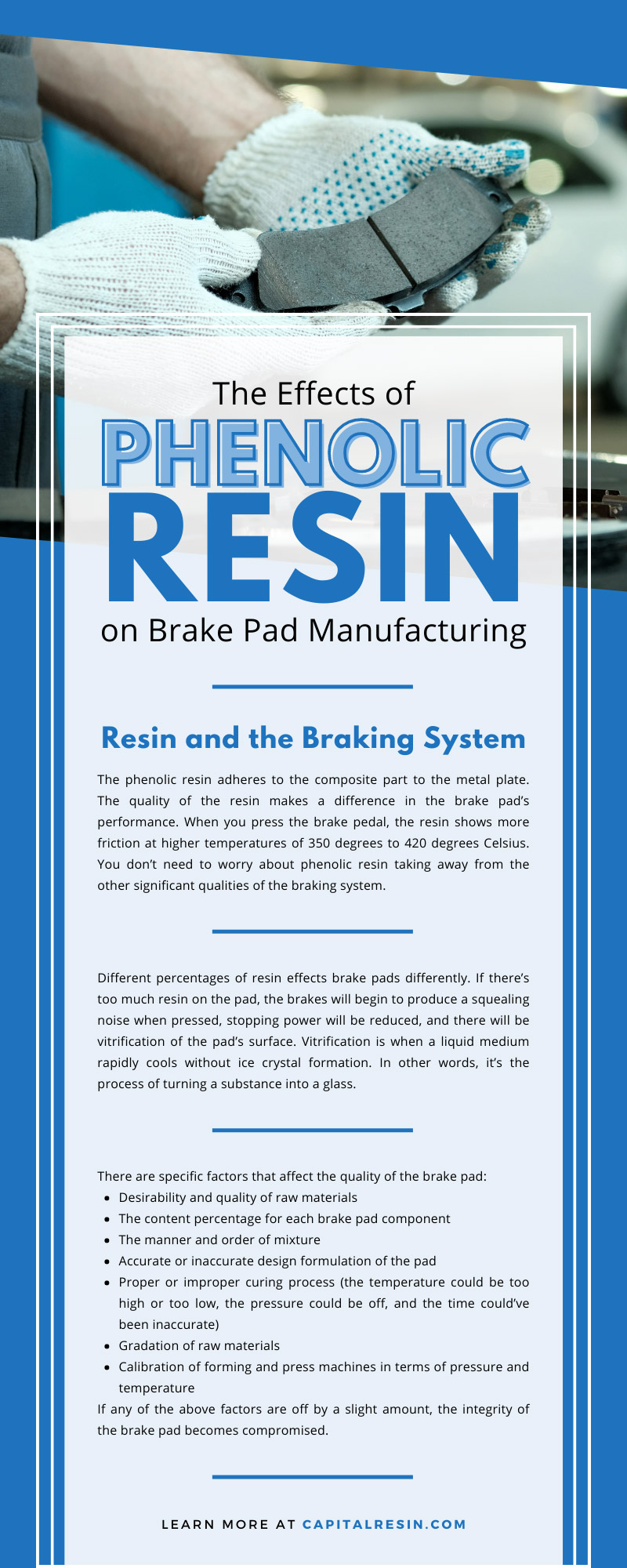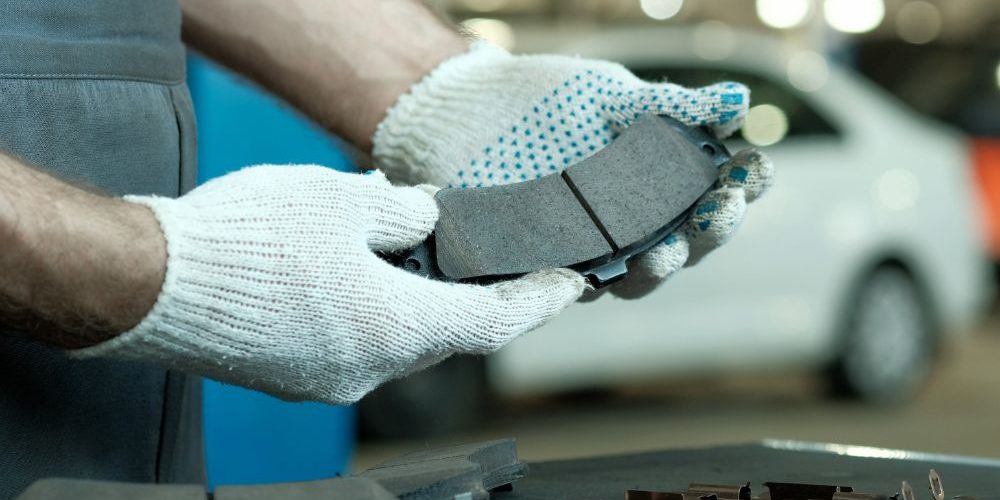Brakes have been around for decades. Since the invention of the horse and buggy, brakes have had an important place in our transportation industry. Below, we’ll examine the effects of phenolic resin on brake pad manufacturing and how the brake pad industry is moving toward eco-friendly options.
The Braking System
Brakes help us feel safe as we’re driving. If the brake light comes on, it’s a priority to figure out what’s wrong. It’s a critical system in automotive safety. Your brakes aren’t a couple of parts that help slow down your vehicle, and the brake pads hold the wheel rotation allowing the braking to occur. Different materials make up a brake pad.
Until recently, asbestos was the raw material used in the manufacturing of brake pads. Researchers have been working tirelessly to find another material to substitute for the harmful material. There are a few front runners that include wood powder, flour, coconut fiber, shell powder, and bamboo fiber.
Resin is another vital component of brake pads. Phenolic resin, in particular, provides the thermal stability the braking system needs. Brake pads create a significant amount of heat due to their function. They heat up quickly and are prone to abrasion. Resin provides thermal resistance to prevent high temperatures from becoming too hot.
The chemical structure of phenolic resin shows the advantages it provides, including:
- Chemical resistance
- Almost zero water absorption
- Electrical properties
- Thermal stability
The presence of aromatic formation in the polymer provides the resin with its benefits.
Resin and the Braking System
The phenolic resin adheres to the composite part to the metal plate. The quality of the resin makes a difference in the brake pad’s performance. When you press the brake pedal, the resin shows more friction at higher temperatures of 350 degrees to 420 degrees Celsius. You don’t need to worry about phenolic resin taking away from the other significant qualities of the braking system.
Different percentages of resin effects brake pads differently. If there’s too much resin on the pad, the brakes will begin to produce a squealing noise when pressed, stopping power will be reduced, and there will be vitrification of the pad’s surface. Vitrification is when a liquid medium rapidly cools without ice crystal formation. In other words, it’s the process of turning a substance into a glass.
There are specific factors that affect the quality of the brake pad:
- Desirability and quality of raw materials
- The content percentage for each brake pad component
- The manner and order of mixture
- Accurate or inaccurate design formulation of the pad
- Proper or improper curing process (the temperature could be too high or too low, the pressure could be off, and the time could’ve been inaccurate)
- Gradation of raw materials
- Calibration of forming and press machines in terms of pressure and temperature
If any of the above factors are off by a slight amount, the integrity of the brake pad becomes compromised.
Sustainable Materials and Brake Pads
Quite a few materials create a brake pad: reinforcement, fillers, binders, and abrasives. Resin is part of the binder for the brake pad. Binders hold all the components together. They must be a stable and lightweight material that can handle high temperatures and quick temperature changes. When the binders can’t handle these factors, a brake pad won’t be able to hold up. Although asbestos is a fantastic material used as a reinforcement, the carcinogens it releases cause too much harm to be put into the brake pad.
Coconut shell waste is one inexpensive and renewable material that manufacturers are open to using in place of asbestos. The biodegradable ability of coconut shell waste and its physical strength make it an excellent alternative. An article discusses a study that a coconut shell strengthened brake pad showed beneficial effects. This is exciting news in the industry, as it means we can begin to move away from harmful asbestos and utilize recyclable and renewable materials.
The same article talks about combining phenolic resin with renewable resources due to the increased demand for breaks. Brakes need to have optimized friction control to hold up to today’s standards. Phenolic resin combines with potassium titanate and cashew shell liquid to enhance the friction and hardness measurement at temperatures around 100 degrees Celsius.
There have been various materials combined with resin, such as banana peels. It’s important to note that the higher the thermal breakdown and degradation temperature, the lower the decomposition and oxidation when resin is the base material in the brake pad. The resin’s decomposition temperature can rise when the modified phenolic resin is used in the process.
The Findings
The great news is that the different renewable and recyclable materials held up in testing. The materials tested almost as well brake pads with asbestos. These findings mean there will be a decrease in health risks and environmental pollution.
Final Thoughts
All individuals expect brakes to perform up to standards when they go to press the brake pedal. Steel plates support the friction material that creates brakes. These need to have an optimal coefficient of friction during the braking process. Eco-friendly materials can affect the process, but the right bonding process and the right materials can make all the difference.
When researchers focus on agricultural waste to create the pads, they should pay attention to the amount, particle type, and size of the waste used. When a larger reinforcement particle size is used, it creates an open bond structure. This larger size will also yield a higher percentage of water and oil absorption, burnt parts, and wear.
The introduction of phenolic resin with the agricultural waste improves the mechanical and physical properties compared to polyester resins. Phenolic resin has a higher decomposition temperature than polyester resin. This ability offers a longer lifespan. It’s able to resist wear and fade better than the other brake pads. If you want better results with your brake pads, look no further than modified phenolic resin. The effects of phenolic resin in brake pad manufacturing are changing. It’s making them better as the industry switches to more eco-friendly options—and phenolic resin will be along for the ride.
Capital Resin is a trusted resorcinol manufacturer, and we alsoproduce resin. We’re in the industry to create the best resin and chemicals.








